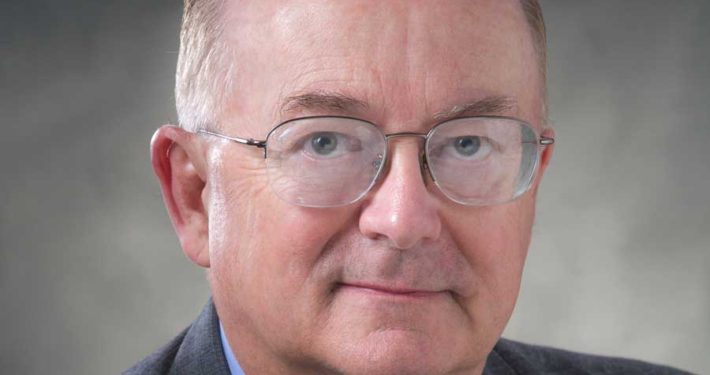An adolescent specialist for the past 40 years, Dr. Velez-Domenech says his attraction to the subspecialty that treats kids roughly ages 10 to 24 was piqued by those who ran the adolescent clinic during his internship.
“The doctors there had different interests, such as dermatology or mental health, but a common thread bound them,” recalls Dr. Velez-Domenech, who practices at Children’s & Women’s Physicians of Westchester, in Valhalla, New York. These physicians, including his mentor, Dr. Andrea Marks, really cared for teenagers.
“The way she treated teens, and the way teens responded to her was very impressive,” says Dr. Velez-Domenech. “Dr. Marks had a tremendous respect for her patients, and this was in the middle 1970s, when there was not as much consciousness about the legal rights of children.”
“For me, it’s not just about taking care of physical issues. It is about taking care of the whole range — emotional and developmental issues, emerging sexuality, independence and emancipation — that got me interested in the field.”
“I think adolescent medicine doctors have always been sensitive to privacy issues because of the things they’re dealing with — development of the reproductive system, physiological changes, emotional and social changes,” Dr. Velez-Domenech said. “To us, the new privacy laws only reinforced what we’ve been practicing all along.”
Dr. Velez-Domenech graduated from the University of Puerto Rico School of Medicine, completed his residency in social pediatrics at Montefiore Medical Center, and did his fellowship in adolescent medicine at The Mount Sinai Hospital. He began practicing in 1979.
Like many adolescent specialists, Dr. Velez-Domenech has subspecialties. He focuses on behavior adjustment, substance abuse disorders, obesity management, and reproductive endocrinology.
Adolescents and young adults deserve a doctor of their own, with whom they feel comfortable privately discussing delicate health issues, says Dr. Velez-Domenech.
“For me, it’s not just about taking care of physical issues,” he says. “It is about taking care of the whole range — emotional and developmental issues, emerging sexuality, independence and emancipation — that got me interested in the field.”
Making Inroads
The evolution since the 1970s of privacy rights and scientific advances in clinical, psychological and behavioral issues has changed the way clinicians treat and manage their adolescent patients.
Significant progress has been made in the management of mental illness and chronic medical illness, as well as in the field of gynecology, and in the development of birth control methods, according to a 2003 report on the history of adolescent medicine in Pediatric Research.
The prevalence of adolescent-related problems in recent decades has also allowed adolescent medicine specialists to take the lead — incorporating advances in pediatrics, gynecology and psychiatry to better treat the age group they know best, the report said.
“We now see more patients with a combination of physical and emotional issues that lead to physical illness,” said Dr. Velez-Domenech. “For example, we see more patients with reproductive and endocrine disorders as a result of obesity.”
An increasing adolescent population in need of specialized treatment, as well as advances in treating adolescent-related problems have provided much needed exposure to the field. The press has also put a spotlight on adolescent-related health, giving more recognition to the specific problems and issues adolescents face.
“Twenty years ago, pediatricians didn’t know adolescent medicine existed,” says Dr. Velez-Domenech.
“Today, they refer their patients to us.”
More Work to be Done
Adolescent medicine was finally recognized as a board-certified specialty in 1991, but it is far from being the cool kid on the block. The specialty draws a niche group of doctors whose clinical skill must be complemented with the kind of listening skills and patience that can crack the surly exterior of a teenager.
What’s more, adolescent medicine as a specialty requires an extra three years of training — both a cost in time and money that is rarely offset in payment. Insurance companies have yet to validate through payment the level of intervention a patient demands. “It’s still not a field that is very popular,” Dr. Velez-Domenech said. “We deal with a lot of stuff that is very private to the patient and the parents. Who wants to advertise that he or she is depressed?”
Only 189 certificates in adolescent medicine were issued from 2004 to 2013. During the same period, 2,835 were issued in geriatric medicine.
In 2014, the American Academy of Pediatrics and 10 fellow medical organizations wrote a letter asking that $5 million be infused into the federal Pediatric Subspecialty Loan Repayment Program as an incentive for medical students to pursue pediatric subspecialties.
“Shortages threaten to become more severe as fewer medical students choose careers in pediatric mental health care and pediatric subspecialties,” the letter said. “At the same time, the mean age of pediatric sub-specialists exceeds 50 years.”
The dearth of pediatric specialists is also compounded by the growing number of children in the U.S. In 2011, there were 73.9 million children, 1.5 million more than in 2000. This number is expected to grow to 101.6 million by 2050, increasing demand for pediatric and adolescent health care.
Shortages of these specialists means many young patients must wait to get an appointment. Others may not get the treatment they need.
“Adolescent medicine is not progressing as much as other fields — you put in the same amount of time training to become a board-certified adolescent doctor as you would training to become a pediatric cardiologist, but I’m not a pessimist. It’s getting better,” says Dr. Velez-Domenech.
“I have patients who are doctors now. That’s the reward,” he adds. “You can’t pay the mortgage with that, but it keeps me going.”







